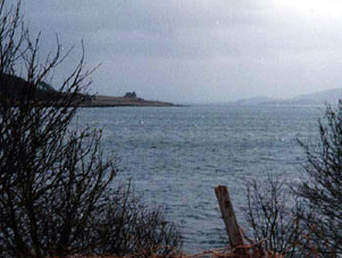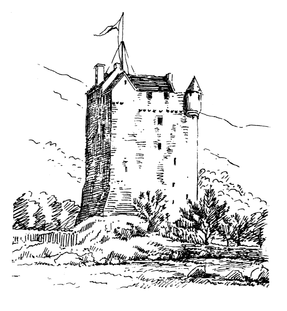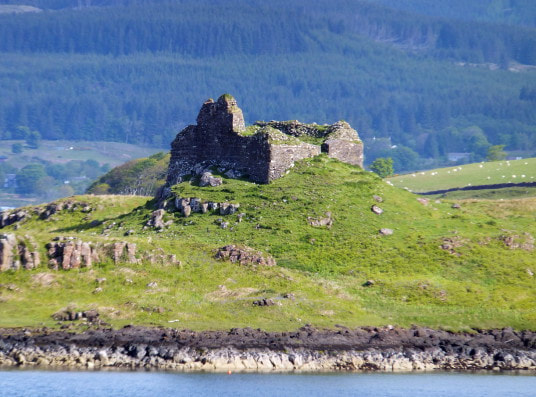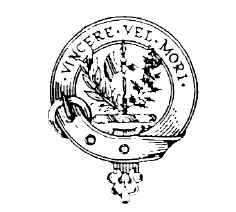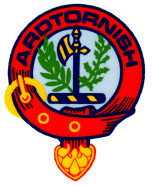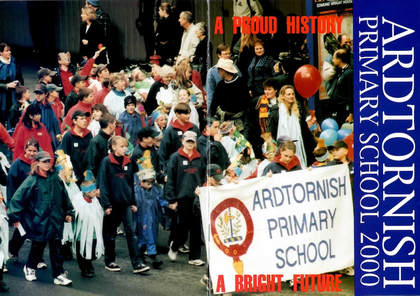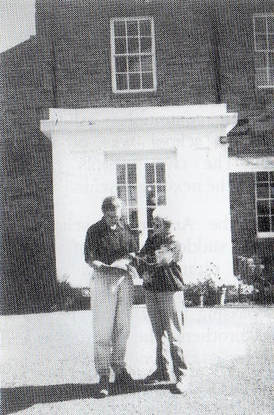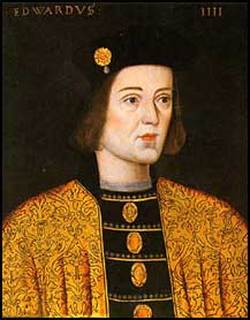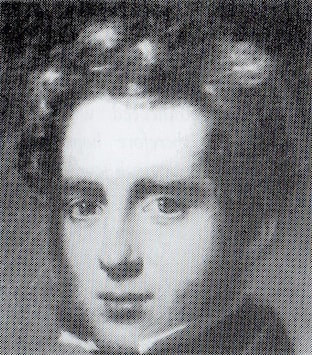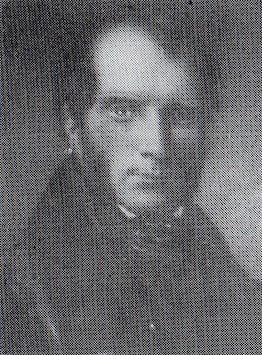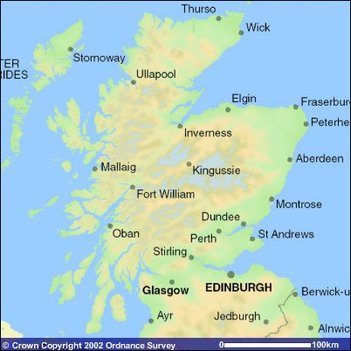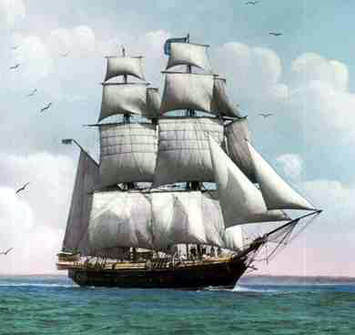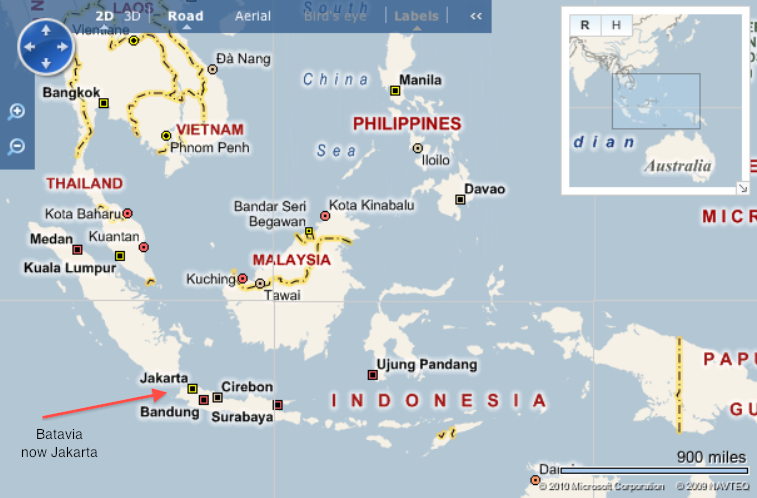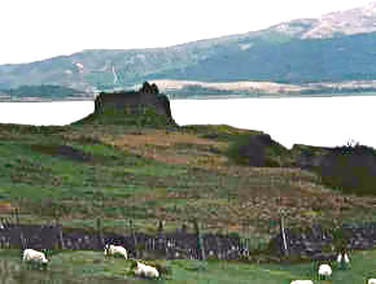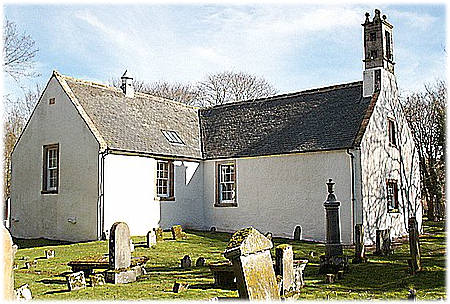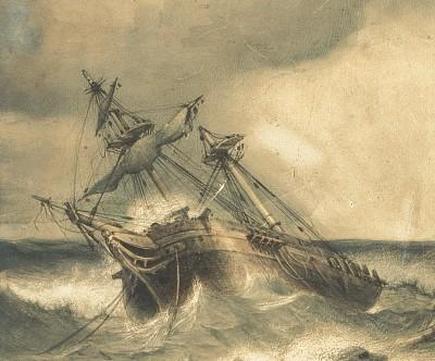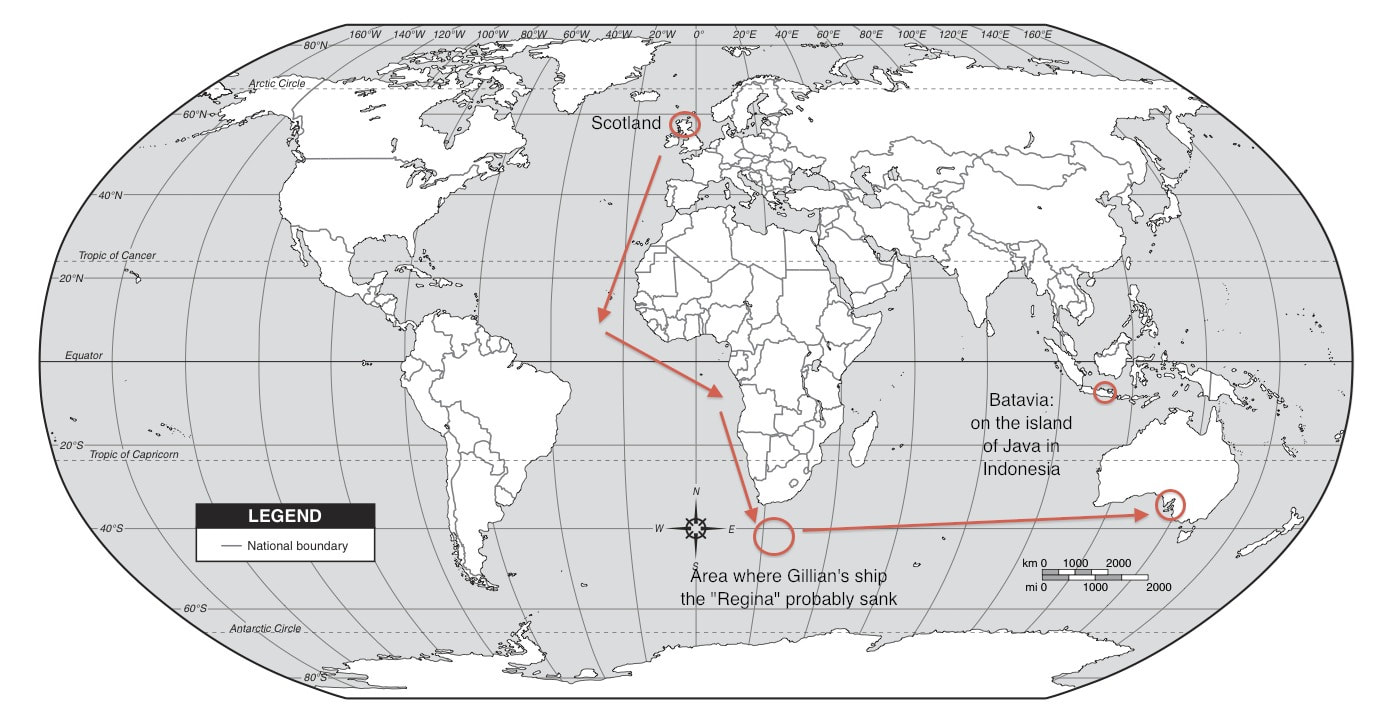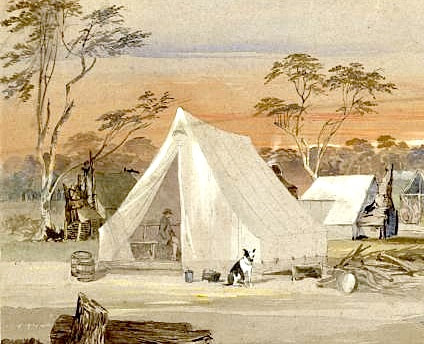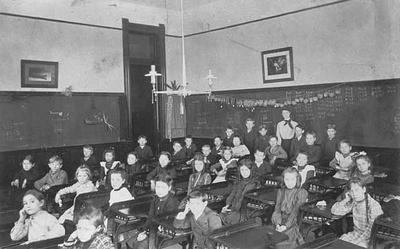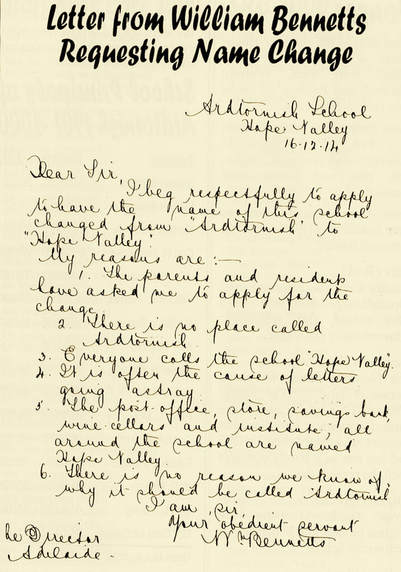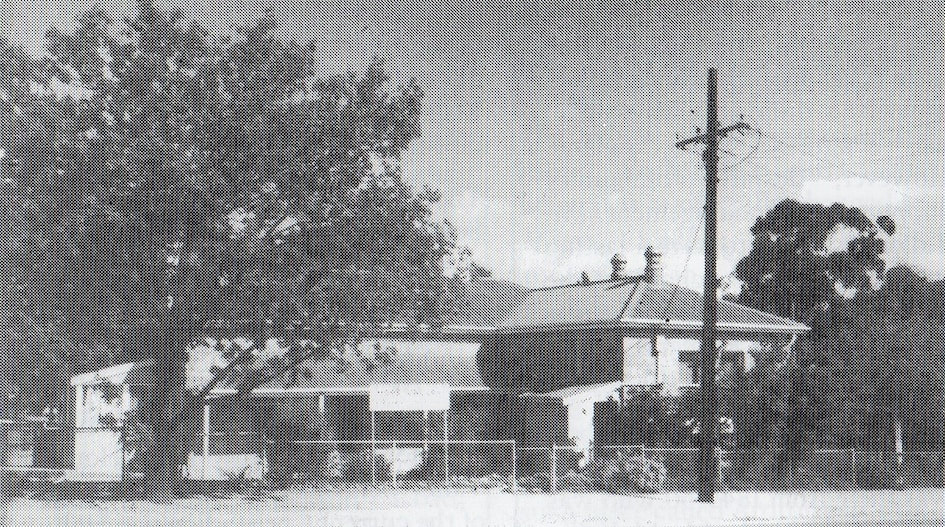The History of Ardtornish - for Older Readers.
ARDTORNISH: ARD - a height, promontory TORR - a hill, castle NISH - a peninsula or headland
|
Ardtornish, is a Nordic/Gaelic word meaning "Highland Promontory" as was the original name of the Hope Valley School.
The name "Ardtornish" was given to the original school, built on Lower North East Road, in Hope Valley in 1842, at the request of the Scottish landowner, Angus MacLaine, who donated the land and £100 towards its construction. Angus MacLaine, whose forebearers came from the Scottish district of Morvern, had extensive interests in Ardtornish Castle. |
|
ARDTORNISH CASTLE
Lochaline, Argyllshire, SCOTLAND Overlooking the Sound of Mull are the remains of this 13th century castle. It was in this castle that in 1461 the Lord of the Isles and the Earl of Ross signed the extraordinary treaty of "Westminster - Ardtornish" by which the Earl of Douglas and King Edward IV proposed to divide Scotland between them. |
|
MACLAINES of LOCHBUIE
The Island of Mull The MacLaines of Lochbuie settled on the island in the 13th century and laid claim to the castle. Today Ardtornish Castle is a ruin, but enough of it remains to show that it was once a formidable stronghold for the Scottish Lords of the Isles, with its raised position overlooking the sound. Today it sits in ruins, a lonely sentinel on a remote coastline in the Scottish Highlands. |
|
|
Ardtornish Primary School History
Foreword
|
In 2000 Ardtornish Primary School celebrated 20 year on its current site. The following information is sourced from the 20th Anniversary Booklet "A Proud History - A Bright Future" which was written to document the school's 153 year history.
... Over a five year period a group of dedicated people undertook the painstaking task of piecing together the early and rich history, which we have now come to know as the "Ardtornish Story". The journey began in 1995 with a visit to Ardtornish Castle in the Scottish Highlands where questions were raised as to its possible connections with Ardtornish School in Adelaide. A chance enquiry in the Council Offices of Oban in Scotland led me to make contact with Mr. Murdo McDonald, a prominent local Scottish historian who had done extensive research on Ardtornish Castle and its owners, the MacLaine family, one of whom had subsequently emigrated to South Australia. The discovery of the Greenfield Papers in the Scottish National Archives building in Edinburgh, in 1996, indicated that the original letters of the MacLaine Family were still in existence and in the hands of Mr. James Greenfield, a descendant of the MacLaine lineage. There was great excitement when agreement was given for one of the members of the group to sight the original letters. James Greenfield graciously allowed photocopies of the letters to be made and these were hastily dispatched to Australia where over the next five years many hours were spent deciphering them and putting the pieces of the puzzle together. With the information from the letters themselves and records from the Tea Tree Gully Council, the Mortlock Library and the State Records Office, a comprehensive history of the settlement of Tea Tree Gully and the establishment of the Ardtornish School was able to be put together. Pictured Opposite is James Green field being presented with Ardtornish student Sarah Hubbard's history project at his home in Hereford in 1997. .. I would like to extend my personal thanks to Ros Blakeney and Sue Pylkkanen in the early years, and to Diane March, Debra Turner and Angela Moore for their continued support over five years. To Keith and Lots Bowen and James Greenfield in the U.K. I would also like to extend my sincere thanks, for without their assistance the collation of this history would not have been possible. It has been a truly fantastic experience. Sam Katsivas - Staff member |
Introduction
|
No history of Ardtornish School would be complete without reference to its Scottish heritage.
The early Scottish pioneers played a significant role in the early days of settlement of the Modbury area, when they established a large farm called the Ardtornish Estate. The word Ardtornish consists of three Scottish words - Ard meaning a height or promontory, Torr meaning a hill or castle and Nish meaning peninsula. Ardtornish, a 13th century Scottish castle, overlooks the Sound of Mull in the district of Morvern in the Scottish Highlands. It was in this castle that in 1461 the Lord of the Scottish Isles and the Earl of Ross signed the extraordinary treaty of "Westminster - Ardtornish" by which the Earl of Douglas and proposed to divide Scotland between them. |
This is one of the earliest documented historical references to Ardtornish castle.
The MacLaines ot Lochbuie settled on the island in the 13th century and laid claim to the castle. The Lochbuie MacLaines' Coat of Arms displayed a battleaxe with two branches, one a laurel, the other a cypress.
Today Ardtornish Castle is a ruin, but enough of it remains to show that it was once a formidable stronghold, with its raised position overlooking the Sound of Mull. The Lochbuie coat of arms displays the words Vincere Vel Mori Latin for "Victory or Death".
The Lochbuie MacLaines were quite a fearsome clan and their colourful history suggests they were not afraid to use any methods of persuasion at their disposal. The design of the current Ardtornish School logo bears great resemblance to the Lochbuie coat of arms, thus preserving the links between the school and its Scottish heritage.
Today Ardtornish Castle is a ruin, but enough of it remains to show that it was once a formidable stronghold, with its raised position overlooking the Sound of Mull. The Lochbuie coat of arms displays the words Vincere Vel Mori Latin for "Victory or Death". The Lochbuie MacLaines were quite a fearsome clan and their colourful history suggests they were not afraid to use any methods of persuasion at their disposal. The design of the current Ardtornish School logo bears great resemblance to the Lochbuie coat of arms, thus preserving the links between the school and its Scottish heritage.
The MacLaines
Allan MacLaine, born 6th August 1772, married Marjorie, daughter of Angus Gregorson, Esquire of Ardtornish, with whom he had two sons; Gillian, a merchant in Java (an island in Indonesia ) and Angus who later became a Reverend with the Church of Scotland. Gillian and Angus, but in particular Angus, had a profound influence in the shaping of the history of the present Ardtornish School.
The MacLaines ot Lochbuie settled on the island in the 13th century and laid claim to the castle. The Lochbuie MacLaines' Coat of Arms displayed a battleaxe with two branches, one a laurel, the other a cypress.
Today Ardtornish Castle is a ruin, but enough of it remains to show that it was once a formidable stronghold, with its raised position overlooking the Sound of Mull. The Lochbuie coat of arms displays the words Vincere Vel Mori Latin for "Victory or Death".
The Lochbuie MacLaines were quite a fearsome clan and their colourful history suggests they were not afraid to use any methods of persuasion at their disposal. The design of the current Ardtornish School logo bears great resemblance to the Lochbuie coat of arms, thus preserving the links between the school and its Scottish heritage.
Today Ardtornish Castle is a ruin, but enough of it remains to show that it was once a formidable stronghold, with its raised position overlooking the Sound of Mull. The Lochbuie coat of arms displays the words Vincere Vel Mori Latin for "Victory or Death". The Lochbuie MacLaines were quite a fearsome clan and their colourful history suggests they were not afraid to use any methods of persuasion at their disposal. The design of the current Ardtornish School logo bears great resemblance to the Lochbuie coat of arms, thus preserving the links between the school and its Scottish heritage.
The MacLaines
Allan MacLaine, born 6th August 1772, married Marjorie, daughter of Angus Gregorson, Esquire of Ardtornish, with whom he had two sons; Gillian, a merchant in Java (an island in Indonesia ) and Angus who later became a Reverend with the Church of Scotland. Gillian and Angus, but in particular Angus, had a profound influence in the shaping of the history of the present Ardtornish School.
Student Days
|
In early 1819, Angus MacLaine undertook Religious Studies at the Student University of Glasgow in order to become ordained as a Minister of the Clergy. Despite his obvious leanings toward religion, Angus many times doubted his worthiness in attaining such a post. He felt he did not have the necessary qualifications. He himself described as "a greater purity of moral character and a higher sense of religious duties than the generality of men".
Despite these doubts, over the next three years he threw himself into his studies, having a voracious appetite for learning. He immersed himself in his work taking on extra subjects to satisfy his thirst for knowledge, much to the alarm of his uncle, John Gregorson, who expressed his concerns in a letter to Angus. "My Dear Angus", he wrote, "It is impossible a man can be perfect in every branch of Science and it ought to be the great object to make himself as much as possible master of the branches immediately connected with his profession. I therefore hope your Hebrew and Theological studies will occupy most of your attention and study". Despite his uncle's concerns, Angus graduated from his studies and was invested to the Presbytery of Mull on 5th May 1823. From there he was ordained to Lowland Charge, Inverary, on 12th May 1824. |
Gillian MacLaine
|
On Saturday 3rd March 1832 the "Anthony" sailed out of the English Channel with Angus' brother Gillian aboard.
He was on his way to Java (a large island in what is now Indonesia) to seek his fortune. On board, he met a Dutch woman, Catherine van Beurschem, from the Hague, with whom he struck up an immediate friendship and whom he subsequently married. He was very successful in business, founding the legal firm of MacLaine, Watson & Co., Batavia. Later he branched out into the rich import/export trade business where his wealth began to quickly accumulate. As a successful merchant trader operating out of Batavia (now called Jakarta - the capital city of Indonesia), his goods were despatched through the trade routes to London, Java, Singapore and Sydney. |
During this time, and after hearing news that new Australian colonies were really flourishing, he dispatched a ship the "Justine" bound for Sydney and Hobart Town. On board, travelled his agent, known only as "London" whose brief it was to "call in at this new settlement of South Australia, Port Lincoln, Adelaide and Kangaroo Island".
'London' had been instructed as Gillian MacLaine's partner, to purchase land in the new settlement of Adelaide with the aim of setting up a sheep farming business, a venture that MacLaine had been considering for some time. Each man was willing to invest £2000 to make a joint purchase of £4000.
Added to the attraction of buying land in a new colony, was the offer made by the government of S.A., that for every 80 acres of land purchased, the owners would have the entitlement of shipping emigrants to work as labourers in the colony, free of all expenses.
During the next few months, Gillian and Angus exchanged letters, and during the course of their correspondence it emerged that Angus had become quite unwell. Whether this prompted Gillian to expedite matters in relation to the purchase of land in S.A. is not clear, but on 14th December 1838, he advised his ailing brother that he had signed the deeds to purchase 1000 acres of land "in the vicinity of Adelaide". He wrote to Angus inviting him to come to Adelaide to manage the sheep-farming venture, which he now clearly chose to undertake.
'London' had been instructed as Gillian MacLaine's partner, to purchase land in the new settlement of Adelaide with the aim of setting up a sheep farming business, a venture that MacLaine had been considering for some time. Each man was willing to invest £2000 to make a joint purchase of £4000.
Added to the attraction of buying land in a new colony, was the offer made by the government of S.A., that for every 80 acres of land purchased, the owners would have the entitlement of shipping emigrants to work as labourers in the colony, free of all expenses.
During the next few months, Gillian and Angus exchanged letters, and during the course of their correspondence it emerged that Angus had become quite unwell. Whether this prompted Gillian to expedite matters in relation to the purchase of land in S.A. is not clear, but on 14th December 1838, he advised his ailing brother that he had signed the deeds to purchase 1000 acres of land "in the vicinity of Adelaide". He wrote to Angus inviting him to come to Adelaide to manage the sheep-farming venture, which he now clearly chose to undertake.
|
"My Dear Angus", he wrote, "I take it for granted that your mind is now made up and write you in the decided tone of business regarding our future operations in South Australia. I intend placing at your disposal these five thousand pounds for the purpose of sheep farming and agricultural speculation on our joint account, you holding one half interest in all our operations of whatever description. In the course of three months I hope to be able to send you the title deeds of the 1000 acres, and necessary documents to enable you to send out or bring with you forty Highland labourers".
There was no shortage of investors, and the prospect of managing land in the dry, sunny climate of Adelaide, away from the cold, damp and dreary climate of the Scottish Highlands, appealed to Angus both from a health and aesthetic viewpoint. In winter is snows in Scotland and people used to get very sick because of the cold The countryside is often covered in mist as shown in this photo of a Scottish castle. |
Arrangements were made by Gillian to charter a number of vessels, which would carry livestock to the new land. He was indeed confident that Angus would accept the challenge and undertake the long journey to Adelaide to fulfil his new appointment.
It was perhaps this constant talk of travel which also began to make Gillian homesick for his native Scotland. He had, after all, been abroad for nearly seven years and pined for the Scottish Highlands. His wife Catherine, being of Dutch descent, had never seen her husband's native land, and she too longed to make the journey.
It was decided that in February of the following year the MacLaines and several Dutch relatives would travel back to Scotland on board a new sailing vessel owned by one of the subsidiary companies of the firm MacLaine, Watson & Co. The ship was called the "Regina" and she had been built with no expenses spared. She was a luxurious vessel fitted with every convenience and comfort, in addition to being able to carry around three hundred and fifty tons of cargo.
It was perhaps this constant talk of travel which also began to make Gillian homesick for his native Scotland. He had, after all, been abroad for nearly seven years and pined for the Scottish Highlands. His wife Catherine, being of Dutch descent, had never seen her husband's native land, and she too longed to make the journey.
It was decided that in February of the following year the MacLaines and several Dutch relatives would travel back to Scotland on board a new sailing vessel owned by one of the subsidiary companies of the firm MacLaine, Watson & Co. The ship was called the "Regina" and she had been built with no expenses spared. She was a luxurious vessel fitted with every convenience and comfort, in addition to being able to carry around three hundred and fifty tons of cargo.
Angus resigns
|
Life for Angus in Scotland was becoming more difficult. The life and work of a minister in an unwieldy Highland parish was very exacting and as a result his health began to suffer even further.
He knew that to leave the presbytery would raise questions not only from his devout uncle, John Gregorson, and the Duke of Argyll, but also from his own parishioners. He wrote to his uncle and informed him that he wished to resign his post as a minister and travel to Australia to take up farming duties. The response he received from Gregorson was short and to the point. Gregorson made no secret of his disappointment and even went so far as to suggest that Gillian would be extremely disappointed to arrive on a holiday in Scotland and find his brother had left for the Antipodes. |
He was obviously unaware that Gillian had already made overtures to his brother about a partnership to manage the jointly owned property in Australia.
So sudden was Angus' decision to leave Scotland that he did not directly inform his parishioners of the decisions he had taken, leading to resentment amongst them. He did, however, write to the Duke of Argyll tendering his resignation, citing reasons of ill health for his decision. On 13th February 1840, he received this reply from the Duke in London.
"Dear Sir, I am very sorry that your health should be in such a state that you think of resigning the Parish of Ardnamurchan but as you state that you intend shortly being in London, I beg to say that I shall be glad to see you here where we can talk over that subject and all that relates to it. lam, Your Obedient Servant Argyll"
At the subsequent meeting, the Duke was unable to change Angus McLaine's mind and on 1st March 1840, preparations were made to sail to Adelaide, Australia on the sailing ship the "Dauntless".
While awaiting favourable weather so the ship could sail, Angus despatched a letter from London to his uncle John Gregorson in Scotland in which he vigorously defended his decision to go to South Australia.
He wrote in part: "I am not however acting from any sudden impulse but from long and deliberate reflection and I leave my native country, whatever fortune may befall me with a mind completely at rest as to the fitness and propriety of the course I have taken. Indeed I could not without feeling thus, have the resolution to leave relatives and friends so dear to me; to endure the pain of so distant, though I hope temporary separation; and to encounter as I know I must, hardships, difficulties and disappointments, in a new life so very opposite to the quiet and ease of that I am about to leave."
On March 4th Angus sailed out of England with a number of "emigrants", all bound for South Australia. Ironically, Gillian was at the same time on board the Regina, with his family and friends, sailing towards his native Scotland.
The Dauntless arrived in Adelaide anchoring on the; shores of Holdfast Bay on 10th July 1840, after just over four months at sea. There was no jetty at the place of landing, so the passengers were brought off in boats until reaching shallow water, where the men had to walk through as best as they could, while the women were carried ashore on the backs of obliging sailors.
So sudden was Angus' decision to leave Scotland that he did not directly inform his parishioners of the decisions he had taken, leading to resentment amongst them. He did, however, write to the Duke of Argyll tendering his resignation, citing reasons of ill health for his decision. On 13th February 1840, he received this reply from the Duke in London.
"Dear Sir, I am very sorry that your health should be in such a state that you think of resigning the Parish of Ardnamurchan but as you state that you intend shortly being in London, I beg to say that I shall be glad to see you here where we can talk over that subject and all that relates to it. lam, Your Obedient Servant Argyll"
At the subsequent meeting, the Duke was unable to change Angus McLaine's mind and on 1st March 1840, preparations were made to sail to Adelaide, Australia on the sailing ship the "Dauntless".
While awaiting favourable weather so the ship could sail, Angus despatched a letter from London to his uncle John Gregorson in Scotland in which he vigorously defended his decision to go to South Australia.
He wrote in part: "I am not however acting from any sudden impulse but from long and deliberate reflection and I leave my native country, whatever fortune may befall me with a mind completely at rest as to the fitness and propriety of the course I have taken. Indeed I could not without feeling thus, have the resolution to leave relatives and friends so dear to me; to endure the pain of so distant, though I hope temporary separation; and to encounter as I know I must, hardships, difficulties and disappointments, in a new life so very opposite to the quiet and ease of that I am about to leave."
On March 4th Angus sailed out of England with a number of "emigrants", all bound for South Australia. Ironically, Gillian was at the same time on board the Regina, with his family and friends, sailing towards his native Scotland.
The Dauntless arrived in Adelaide anchoring on the; shores of Holdfast Bay on 10th July 1840, after just over four months at sea. There was no jetty at the place of landing, so the passengers were brought off in boats until reaching shallow water, where the men had to walk through as best as they could, while the women were carried ashore on the backs of obliging sailors.
The Regina is lost at sea
|
It is not clear when the Regina perished, but when no news was heard after several months, concerns were raised for her safety.
The weeks and months passed and as no further news was forthcoming from any quarter, fears for the very worst began to surface. There was great speculation both in London and Batavia that the Regina, despite her luxurious appointments and solid construction had met an ill-fated demise in rough hurricanes in the seas around the Cape of Good Hope. By October 1840, all hope had been abandoned of the vessel ever being found. Gillian's business partner, Mr. E. Watson who had now made his way to London, wrote to Angus imploring him to come back to London to settle the estate of his deceased brother. The plea was made on behalf of Angus' uncle, John Gregorson, who had never approved of Angus' decision to travel to Australia and used the occasion of Gillian's death to further champion his arguments. |
On 16th November 1840, Gregorson despatched a letter to Australia. In it he wrote:
" We have at last obliged to have recourse to the gainful conclusion that the ill-fated Regina must have floundered at sea and that our dearest Gillian and his family have all perished.
" We have at last obliged to have recourse to the gainful conclusion that the ill-fated Regina must have floundered at sea and that our dearest Gillian and his family have all perished.
The mail was certainly slow as there is evidence to suggest that on 17th February 1841, some four months later, Angus McLaine was still unaware of his brother's disappearance at sea, for he wrote in a letter to his Aunt, Mrs. Gregorson,
"I am now becoming very anxious to hear of Gillian's safe arrival in Britain. I have not heard one word from McNeil since my arrival here, and know not for certain when Gillian may have sailed; but had he sailed in March I might now have been informed of his arrival."
"I am now becoming very anxious to hear of Gillian's safe arrival in Britain. I have not heard one word from McNeil since my arrival here, and know not for certain when Gillian may have sailed; but had he sailed in March I might now have been informed of his arrival."
|
Angus had by this time set up "camp" in the area we now know as Ardtornish Corner (corner North East and Grand Junction Roads) fencing off around 80 acres of land.
His original dwelling was a tent, surrounded by other tents for the servants and the labourers who had come with him from Scotland. These were erected handy to the springs in Dry Creek, close to the present bridge on Kelly Road. It was a settlement with all the hallmarks of a small Scottish village. There were cows, calves, chickens and swine all providing a source of nutrition and employment for the early settlers. He later purchased 750 ewes to add to his growing stock. Free English settlers were also on hand, employed as contract workers to tend the crops, mainly fruit and vegetables. |
Although hot, the climate was more suitable for growing crops than Angus had been accustomed to back home. In a reflective mood he wrote:
"The voices of men, women and children speaking Gaelic or Kentish English may be heard by the passer by - and during the silence of night our dogs, who are remarkably deep toned, bark loud, and often scaring the wild dogs and opossums - so that by day and night Ardtornish, in South Australia, proves itself to have decidedly intruded on the solitude of the desert."
Later a house "of substantial material" was erected on the banks of Dry Creek near the original tent site, and a map released by the Lands Office in Adelaide prompted Angus to ask if the road marked on the map was really to become a road. It did indeed - it became the present day North East Road.
The original Ardtornish House is still standing today and is located on Kelly Road.
By November 1841, Angus received the first of the letters informing him of his brother's death. His distress was all-consuming, and he made immediate plans to sail to Batavia to help execute his brother's last will and testament. There is some evidence to suggest that Gillian's will was subsequently contested by his wife's Dutch relatives.
However, after numerous and considerable legal difficulties, in which the estates in Java, England and Holland were the subject of vigorous legal debate, Angus was finally declared the sole undisputed heir to Gillian's estate. By this time the Dry Creek establishment (Ardtornish) had grown considerably and now boasted a cattle station and dairy farm, two dwelling houses, stockyards, cowsheds and pigsties.
In 1843, Angus returned to Scotland to finalise the affairs of Gillian's deceased estate. He left aboard the "Countess of Durham" which sailed out of Port Adelaide on March 13th of that year. The Ardtornish property in Adelaide was at this time left in the capable hands of his aunt Mrs Gregorson, who managed it with the help of her two nephews.
MacLaine remained in Scotland for a further three years until all loose ends were tied up and all legalities were executed. Then he returned to the homestead he had built five years earlier.
"The voices of men, women and children speaking Gaelic or Kentish English may be heard by the passer by - and during the silence of night our dogs, who are remarkably deep toned, bark loud, and often scaring the wild dogs and opossums - so that by day and night Ardtornish, in South Australia, proves itself to have decidedly intruded on the solitude of the desert."
Later a house "of substantial material" was erected on the banks of Dry Creek near the original tent site, and a map released by the Lands Office in Adelaide prompted Angus to ask if the road marked on the map was really to become a road. It did indeed - it became the present day North East Road.
The original Ardtornish House is still standing today and is located on Kelly Road.
By November 1841, Angus received the first of the letters informing him of his brother's death. His distress was all-consuming, and he made immediate plans to sail to Batavia to help execute his brother's last will and testament. There is some evidence to suggest that Gillian's will was subsequently contested by his wife's Dutch relatives.
However, after numerous and considerable legal difficulties, in which the estates in Java, England and Holland were the subject of vigorous legal debate, Angus was finally declared the sole undisputed heir to Gillian's estate. By this time the Dry Creek establishment (Ardtornish) had grown considerably and now boasted a cattle station and dairy farm, two dwelling houses, stockyards, cowsheds and pigsties.
In 1843, Angus returned to Scotland to finalise the affairs of Gillian's deceased estate. He left aboard the "Countess of Durham" which sailed out of Port Adelaide on March 13th of that year. The Ardtornish property in Adelaide was at this time left in the capable hands of his aunt Mrs Gregorson, who managed it with the help of her two nephews.
MacLaine remained in Scotland for a further three years until all loose ends were tied up and all legalities were executed. Then he returned to the homestead he had built five years earlier.
Ardtornish School
Upon his return, three years later, Angus set about applying for a Government subsidy to erect a school for "education and religious services".
This application was made on the 30th November 1846. By the end of 1847 the first Ardtornish School was built on three acres of land donated by MacLaine. The school was administered by the Adelaide session of the Church of Scotland and was located on "Ardtornish Corner" (currently, the north west corner of the Grand Junction Road & North East Road intersection).
This application was made on the 30th November 1846. By the end of 1847 the first Ardtornish School was built on three acres of land donated by MacLaine. The school was administered by the Adelaide session of the Church of Scotland and was located on "Ardtornish Corner" (currently, the north west corner of the Grand Junction Road & North East Road intersection).
|
From all accounts the early days of the school were not remarkable. The first appointed teacher was Mr. Orr who was at the helm of the new school from the end of 1847 until the end 1848.
It was noted that the school did not appear to really flourish until the appointment of Mr. F. Talloch, a diligent teacher who had emigrated from England. However, despite community support and encouragement, Mr. Talloch was not to have a lasting influence on the school as he became homesick after 3 months and returned to England in the May of 1849. He was succeeded by Robert McTaggart, another Scot, who was there from 1849-50 who was in turn followed by Mr. McKellar for eight months in 1851. |
Augustus Winter was the next schoolmaster and he remained until 1857.
In 1853 some thirty scholars attended the school, although the records show that the attendance was somewhat irregular.
On January 19th 1857, Mr. Charles Kerr from Morphett Vale was appointed to the school. He had previously been a teacher in Newhaven, Scotland and set about his new appointment with verve and enthusiasm. He was popular with the students and community alike, enjoying the support of the parents who afforded him numerous and lavish accolades.
The Ardtornish School had by this time developed the best reputation for scholastic achievement of any schools in the district, due largely to the efforts of Kerr, and it remained thus until its closure in 1875.
The school had a distinctly strong Scottish flavour and it was no wonder, as the appointment of schoolmasters was conducted with the sanction of the Church of Scotland.
In 1849, a mile further along Grand Junction Road, the new Hope Valley School opened (on the site of the current Christadelphian Hall next to the cemetery) almost opposite present day Parcoola Avenue.
Many of the settlers in Hope Valley were Germans and it was no surprise that the new Hope Valley School was as reflective of its German community as the Ardtornish School was of its Scottish. The two schools coexisted for the next eight years.
In 1875, Ardtornish School came to a sudden end when the Ardtornish estate was sold and became part of the Beefacres Estate, passing into the hands of the Hart brothers.The school was now converted to a woolshed.
There was also trouble with the Hope Valley School which had fallen into a disgraceful state of disrepair, due to lack of funds, the burden for which had fallen on the settlers themselves.
It was decided for health and safety reasons to close the existing Hope Valley School, and once again Angus MacLaine was prominent.
In 1853 some thirty scholars attended the school, although the records show that the attendance was somewhat irregular.
On January 19th 1857, Mr. Charles Kerr from Morphett Vale was appointed to the school. He had previously been a teacher in Newhaven, Scotland and set about his new appointment with verve and enthusiasm. He was popular with the students and community alike, enjoying the support of the parents who afforded him numerous and lavish accolades.
The Ardtornish School had by this time developed the best reputation for scholastic achievement of any schools in the district, due largely to the efforts of Kerr, and it remained thus until its closure in 1875.
The school had a distinctly strong Scottish flavour and it was no wonder, as the appointment of schoolmasters was conducted with the sanction of the Church of Scotland.
In 1849, a mile further along Grand Junction Road, the new Hope Valley School opened (on the site of the current Christadelphian Hall next to the cemetery) almost opposite present day Parcoola Avenue.
Many of the settlers in Hope Valley were Germans and it was no surprise that the new Hope Valley School was as reflective of its German community as the Ardtornish School was of its Scottish. The two schools coexisted for the next eight years.
In 1875, Ardtornish School came to a sudden end when the Ardtornish estate was sold and became part of the Beefacres Estate, passing into the hands of the Hart brothers.The school was now converted to a woolshed.
There was also trouble with the Hope Valley School which had fallen into a disgraceful state of disrepair, due to lack of funds, the burden for which had fallen on the settlers themselves.
It was decided for health and safety reasons to close the existing Hope Valley School, and once again Angus MacLaine was prominent.
|
Angus MacLaine was able set aside a piece of land and together with a donation of £100, paved the way for a new school to be built. His only insistence was that the new school would be called Ardtornish.
The school (pictured opposite ) was built further along Grand Junction Road (opposite Tolley Road next to the croquet club) and it officially opened on the 5th December 1881. The stone building comprised a five-roomed teacher's residence with an attached two classroom school. In these days many schools only had one or two teachers and so a house was built for the head teacher on the school grounds. The teacher was responsible for looking after the school building. |
Ardtornish School changes its name to Hope Valley School
|
The school was to retain the name Ardtornish until 1915, when it was officially changed to Hope Valley, the notice appearing in the Education Gazette early that year.This was in direct response to the school principal Mr. William Bennett’s letter dated 16th December 1914.
He requested the name change on the grounds that there was no such place called Ardtornish, that letters often went astray and that all the other local businesses and banks were called Hope Valley. In November 1921, a letter written by a Highbury parent of one of the older boys in the school, to the Director of Education, was scathing in its criticism of a number of practices of the current school administration. Amongst other allegations, the Principal, Mr. Dingle was accused of using the older boys to chop wood and clean out the stable, while the girls were compelled to sweep out and clean out his house. He was also alleged to have left the school for "hours at a time" leaving it in the charge of his assistants. The letter was forwarded to the District Education Office and was investigated by the Chief Inspector of Schools. In his response Mr. Dingle vehemently denied most of the charges with the exception of the wood chopping, for which he was severely censured by the Minister. In 1925 Woodwork was introduced with Elementary Agriculture making its debut as a subject in 1936. Domestic Arts became part of the curriculum in 1938, with all of these subjects being taught for several years. Grade 6 and 7 children signed the Temperance Pledge Book, the last signature being dated 23rd November 1938 with 171children signing this book. |

A highlight for the school was its 2nd prize at the Royal Adelaide Show for its vegetable collection in 1929.
During these years, a school band was developed complete with drums played by boys and fifes, played by girls.
By the early 1960s, when the great building and population boom commenced in the North Eastern suburbs, the school enrolment increased dramatically rising from around 60 students in 1960 to a peak of 464 in December 1971.
During these years, a school band was developed complete with drums played by boys and fifes, played by girls.
By the early 1960s, when the great building and population boom commenced in the North Eastern suburbs, the school enrolment increased dramatically rising from around 60 students in 1960 to a peak of 464 in December 1971.
|
More schools were needed in the area and so in February 1972, the new Highbury Primary School was opened and this relieved some of the pressure on Hope Valley where the enrolments dropped to 235 students.
However, with further growth in the area, and anticipated greater enrolments, our present school was built several kilometres away between Saarinen Avenue and Smart Road in St. Agnes. In 1980, with constant lobbying by the new tenants, a colourful piece of history was revived and the new school reverted once again to its original name of ARDTORNISH.
|
Sport Team Houses
From 1980 -1985 the four House names of Ardtornish Primary School were Para, Warren, Milbrook and Barossa, all taken from famous reservoirs.
These names were retained, until in 1986 the somewhat unimaginative names of Yellow, Red, Blue and Green were installed.
Three years later, the colours were linked to well known local historical figures.
These names were retained, until in 1986 the somewhat unimaginative names of Yellow, Red, Blue and Green were installed.
Three years later, the colours were linked to well known local historical figures.
- Kerr (Red)
Charles Kerr, the enigmatic and popular teacher from 1857 - 1875 who raised the scholastic achievement of the school. - Newman (Yellow)
The Newman family bought a section of land in 1854 named "Waterfall Gully" because of its natural springs. The Newman Nursery was established in 1875 and has run as a family business until the present day. - Angus (Green)
From Angus MacLaine the original pioneer and benefactor of Ardtomish School. - Tolley (Blue)
Douglas Tolley purchased a section of land at Hope Valley in 1891 and began a vineyard as a hobby. The flourishing business was continued after his death by his son Leonard whose own sons Peter, David and Reg all attended the Hope Valley School.
School Principals of Ardtornish 1901 - 2019
|
1. Joseph Mitchell , 01/01/01 till 20/12/11
2. William Bennetts 22/01/12 till 21/12/18 3. Herbert M. Dingle 28/01/19 till 20/12/19 4. Carl H. Nietschke 01/06/20 till 25/06/20 5. J.C. Richardson 01/10/22 till 31/12/22 6. William R. Pattrick 07/06/27 till 03/09/36 7. R. Clifton Pearson 15/09/36 till 31/12/38 8. KA Mugford 01/01/39 till 05/10/48 9. Walter H. Moulds 08/10/48 till 08/05/54 10. A.O.Wright 25/05/54 till 08/10/58 11. Peter L McCarthy 08/10/58 till 14/12/61 12. G.McKie 06/02/62 till 19/12/63 |
12. G.McKie 06/02/62 till 19/12/63
13. Edwin L. Pearce 04/02/64 till 15/12/67 14. W.R.Daw 01/01/68 till 20/12/71 15. Don L. Young 01/01/72 till 13/12/74 16. G. (Tom) McCulloch 01/01/75 till 31/12/79 THE NEW SCHOOL OPENS 17. Brian McLauchlan 01/01/80 till 31/12/86 18. John Lange 01/01/87 till 07/03/88 19. Alex Staritski 07/03/88 till 31/12/97 20. Glyn O'Brien 01/01/98 till 31/12/ 2004 21. Judy Parker 3/7/2005 till 11/10/2009 22. Mark Hansen 12/10/2009 till Dec 2020 |
ARDTORNISH – 20 Year Anniversary – 2000 by Glyn O’Brien Principal
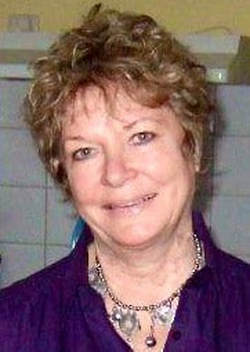
Ardtornish is an excellent place to work both as a staff member and as a student.
In 1998 1 spent my first weeks at Ardtornish walking and talking. The high level of organisation about the place was, and still is, outstanding. Teachers and student leaders filled me in on everything from propagating to pen licences! It was clear to me that I would be able to focus my energy on curriculum development and student learning rather than on behaviour management or trying to get enrolments.
My thanks go to all the staff for their commitment and leadership in so many areas then and now. As a staff we spent time in that year developing a plan for the next three years. We wanted to improve our work with students in literacy, computing and assessment and reporting. Environmental Education was also to continue to be a high priority. We have worked with the plan, added extra parts to it and looked further than this special year of 2000. So it was full steam ahead with all the priorities but also with maintaining all the other great programmes at Ardtornish.
We have a complex timetable. To change any activity usually has a domino effect where other areas need to be changed too. Sometimes this can be irritating but the overall benefits of the myriad activities Ardtornish offers its students are well worth the effort.
Students at Ardtornish are involved in XL Groups, in many sporting activities, in high level computing, in Technology and Science for children (TASC) in Environmental Education and in specialist support programmes, many of which are not available in other schools. In some areas our students are more competent in their learning than we adults - computing for example.
This year has been extraordinary. The buzz of the millennium, the Olympic Games, the growing student numbers and now our 20th birthday has been energising. We have been able to track many of our students from 20 years ago; they are the young adults of the world. They are mothers and fathers now; they are lawyers and mechanics; they are carers and career people.
The foundation that was built here at Ardtornish has been a strong one. To all of us celebrating this special occasion, I thank you for your commitment to one of the best schools in South Australia. Happy Birthday Ardtornish. Hip Hip Hooray!!
In 1998 1 spent my first weeks at Ardtornish walking and talking. The high level of organisation about the place was, and still is, outstanding. Teachers and student leaders filled me in on everything from propagating to pen licences! It was clear to me that I would be able to focus my energy on curriculum development and student learning rather than on behaviour management or trying to get enrolments.
My thanks go to all the staff for their commitment and leadership in so many areas then and now. As a staff we spent time in that year developing a plan for the next three years. We wanted to improve our work with students in literacy, computing and assessment and reporting. Environmental Education was also to continue to be a high priority. We have worked with the plan, added extra parts to it and looked further than this special year of 2000. So it was full steam ahead with all the priorities but also with maintaining all the other great programmes at Ardtornish.
We have a complex timetable. To change any activity usually has a domino effect where other areas need to be changed too. Sometimes this can be irritating but the overall benefits of the myriad activities Ardtornish offers its students are well worth the effort.
Students at Ardtornish are involved in XL Groups, in many sporting activities, in high level computing, in Technology and Science for children (TASC) in Environmental Education and in specialist support programmes, many of which are not available in other schools. In some areas our students are more competent in their learning than we adults - computing for example.
This year has been extraordinary. The buzz of the millennium, the Olympic Games, the growing student numbers and now our 20th birthday has been energising. We have been able to track many of our students from 20 years ago; they are the young adults of the world. They are mothers and fathers now; they are lawyers and mechanics; they are carers and career people.
The foundation that was built here at Ardtornish has been a strong one. To all of us celebrating this special occasion, I thank you for your commitment to one of the best schools in South Australia. Happy Birthday Ardtornish. Hip Hip Hooray!!
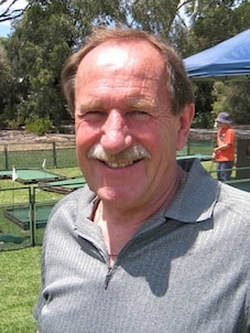
Alex Staritski – Principal 1988 - 1997
It was not until I left at the end of the 1997 school year that I found out that the Ardtornish motto translated into, "To Conquer or Die".
At the time, the irony of the motto on the Ardtornish crest did not have the impact that in reality it should have, nor indeed did it consciously influence my actions during my ten years at the school. However, what I realise now is that the school was always under threat - it was surrounded by well established schools within close proximity and in reality, it was built to last a relatively short period of time.
To survive, we could not rely on its "smallness" but rather had to have excellent and diverse learning programmes which would appeal to a much wider school community.
The transformation of the school was not easy nor did it just happen. Changes introduced, heavily focussed on raising the school's profile and its reputation by ensuring that the school's grounds, facilities and resources were outstanding and its total learning programme was diverse, rich and pursued a goal of quality as well as enhancing the potential of each member of the school community. New initiatives which required new structures and the way that learning was delivered were introduced to provide support, extension and enrichment programmes.
In addition, existing programmes were given a new lease of life and considerable emphasis was placed on students' behaviour and the school Dress Code. Active school promotion through the annual EXPO, external awards, etc. became part of the overall strategy to lift the image of the school. The rewards that followed were considerable. Science and Technology, and Environmental Education both won National Awards, with the latter also winning many other awards. The Information Technology and Music programmes were recognised as exceptional while the two "drill" teams continued to bring very positive views about the school.
In the Basic Skills Tests the results in Numeracy and Literacy increased and the Year 7 Graduation Ceremony ensured that students wanted to complete their primary education at Ardtornish. Enrolments increased from 350 to over 600 forcing the introduction of a Zone of Right. It was THE school in which to be enrolled in the district and the students were visibly proud of that fact.
As mentioned before, achieving the positive gains was not easy but in the end, the new climate forged because people believed in each other and trusted each to do what was best for the children at the school. It was a great team effort, a team which comprised a committed, enthusiastic and very professional staff and one which was greatly encouraged, supported and assisted by the parents.
I am very proud to have been a member of that team at a time when so much was achieved and I am very pleased to have made so many dear friends. Ardtornish has conquered and will continue to live on as long as the spirit of the '90's is nurtured.
The Future
Ardtornish Primary School with its colourful and proud history has been a shining light in South Australian education for over 153 years. Who knows what is in store for it in the future? One thing is certain. The current stakeholders - the students, staff and parent community are united in their commitment to maintain its excellence for the next 150 years and beyond.
It was not until I left at the end of the 1997 school year that I found out that the Ardtornish motto translated into, "To Conquer or Die".
At the time, the irony of the motto on the Ardtornish crest did not have the impact that in reality it should have, nor indeed did it consciously influence my actions during my ten years at the school. However, what I realise now is that the school was always under threat - it was surrounded by well established schools within close proximity and in reality, it was built to last a relatively short period of time.
To survive, we could not rely on its "smallness" but rather had to have excellent and diverse learning programmes which would appeal to a much wider school community.
The transformation of the school was not easy nor did it just happen. Changes introduced, heavily focussed on raising the school's profile and its reputation by ensuring that the school's grounds, facilities and resources were outstanding and its total learning programme was diverse, rich and pursued a goal of quality as well as enhancing the potential of each member of the school community. New initiatives which required new structures and the way that learning was delivered were introduced to provide support, extension and enrichment programmes.
In addition, existing programmes were given a new lease of life and considerable emphasis was placed on students' behaviour and the school Dress Code. Active school promotion through the annual EXPO, external awards, etc. became part of the overall strategy to lift the image of the school. The rewards that followed were considerable. Science and Technology, and Environmental Education both won National Awards, with the latter also winning many other awards. The Information Technology and Music programmes were recognised as exceptional while the two "drill" teams continued to bring very positive views about the school.
In the Basic Skills Tests the results in Numeracy and Literacy increased and the Year 7 Graduation Ceremony ensured that students wanted to complete their primary education at Ardtornish. Enrolments increased from 350 to over 600 forcing the introduction of a Zone of Right. It was THE school in which to be enrolled in the district and the students were visibly proud of that fact.
As mentioned before, achieving the positive gains was not easy but in the end, the new climate forged because people believed in each other and trusted each to do what was best for the children at the school. It was a great team effort, a team which comprised a committed, enthusiastic and very professional staff and one which was greatly encouraged, supported and assisted by the parents.
I am very proud to have been a member of that team at a time when so much was achieved and I am very pleased to have made so many dear friends. Ardtornish has conquered and will continue to live on as long as the spirit of the '90's is nurtured.
The Future
Ardtornish Primary School with its colourful and proud history has been a shining light in South Australian education for over 153 years. Who knows what is in store for it in the future? One thing is certain. The current stakeholders - the students, staff and parent community are united in their commitment to maintain its excellence for the next 150 years and beyond.
20th Anniversary Staff List 2000
Ms Glyn O'Brien (Principal) Mr Merv Stals (Deputy) Mrs Jan Fitzgerald (Environ. Ed.) Mr Sam Katsivas (Computing) Ms Dora luliano ( Literacy) Mrs Di Mason (Drama) Mrs Marg Duddy (Resource Centre) Ms Nikki Veal (Japanese) Mr Rino Tranfa (7) Mrs Chris Seaman (7) Mr Darryl Carter (6/7) Ms Grace Murphy (6) Ms Alison Heath (6/7) Mr Greg Radloff (6) Ms Sylvia Markis (5) Mr Colin Telfer (5) Mrs Helen James (4/5) Mr Bob Hindmarsh (4) Mrs Joy Emms (3/4) Mrs Tina Antenucci (3) Mr Mat Wilton (3) Ms Helen McCallum (2/3) Ms Jacquie Radan (2) Mrs KayFarrant(1/2) Ms Heidi Newmann (1) Mrs Maria Taylor (R-2) Ms Linda Cox (R/1) Ms Robyn Watson (R/1) Mrs Barbara McBrearty (Rec) Mrs Cecilia Borda (Rec) Ms Anna Mycko (Rec) Ms Lila D'Antuoni ( Rec) Mrs Heather Were (Secretary) Mrs Margaret Robson (Finance) Mrs Sue Pylkkanen (SSO) Mrs Judy Haggett (SSO) Mrs Judy Connor (Library SSO) Mrs June Lunn (SSO) Mrs Gill Olliver (SSO) Mrs Judy Mason (SSO) Mrs Cathie Ettridge (SSO) Mrs Jill Woolley (Pottery) Mrs Glenys Pawlowski (OSHC) Mr Mark Evans (I.T. Tech) Mrs Gaye McKee (Canteen) Mr Graham Carpenter (Maintenance) Mr Des Richards (Maintenance) Mr Paul Day (Groundsman)
Ms Glyn O'Brien (Principal) Mr Merv Stals (Deputy) Mrs Jan Fitzgerald (Environ. Ed.) Mr Sam Katsivas (Computing) Ms Dora luliano ( Literacy) Mrs Di Mason (Drama) Mrs Marg Duddy (Resource Centre) Ms Nikki Veal (Japanese) Mr Rino Tranfa (7) Mrs Chris Seaman (7) Mr Darryl Carter (6/7) Ms Grace Murphy (6) Ms Alison Heath (6/7) Mr Greg Radloff (6) Ms Sylvia Markis (5) Mr Colin Telfer (5) Mrs Helen James (4/5) Mr Bob Hindmarsh (4) Mrs Joy Emms (3/4) Mrs Tina Antenucci (3) Mr Mat Wilton (3) Ms Helen McCallum (2/3) Ms Jacquie Radan (2) Mrs KayFarrant(1/2) Ms Heidi Newmann (1) Mrs Maria Taylor (R-2) Ms Linda Cox (R/1) Ms Robyn Watson (R/1) Mrs Barbara McBrearty (Rec) Mrs Cecilia Borda (Rec) Ms Anna Mycko (Rec) Ms Lila D'Antuoni ( Rec) Mrs Heather Were (Secretary) Mrs Margaret Robson (Finance) Mrs Sue Pylkkanen (SSO) Mrs Judy Haggett (SSO) Mrs Judy Connor (Library SSO) Mrs June Lunn (SSO) Mrs Gill Olliver (SSO) Mrs Judy Mason (SSO) Mrs Cathie Ettridge (SSO) Mrs Jill Woolley (Pottery) Mrs Glenys Pawlowski (OSHC) Mr Mark Evans (I.T. Tech) Mrs Gaye McKee (Canteen) Mr Graham Carpenter (Maintenance) Mr Des Richards (Maintenance) Mr Paul Day (Groundsman)
SRC 2000
The SRC convened by Mrs. Tina Antenucci meets every Tuesday afternoon as a group and also has a voice on the school management committee.
Ashwini Balnaves - Reception David Mates - Reception Sam Williams - Reception Alicia Denham - Year 1 Alexander King - Year 1 Samuel Primiero - Year 1 Lana Robertson - Year 1 Anna Rose - Year 1 Alexandra Bottrell - Year 2 Emma Bulling - Year 2 Tory Ettridge - Year 2 Tyson Lee - Year 2 Joshua Oates - Year 2 Joshua Alien - Year 3 Talia Carter - Year 3 Brett Carr - Year 3 Soraya Goels - Year 3 Sarah Holden - Year 3 Aslin Styles - Year 3 Aaron Bobridge - Year 4 Joshua Bollmeyer - Year 4 Marianna Datsenko - Year 4 Ashleigh Denham - Year 4 Tilly Duncan - Year 4 Simone Goels - Year 4 James Harding - Year 4 Adrian Marr - Year 4 Jessica Logan - Year 5 Ryan Packer - Year 5 Rhiess Styles - Year 5 Vanessa Baldassarre - Year 6 Andrew Brown - Year 6 Latara Friend - Year 6 lan Grunert - Year 6 Chris Robinson - Year 6 Carlie Steart - Year 6 Lena Weidtler - Year 6 Katie Bettison - Year 7 Katherine Erdmann - Year 7 Devon Forbes - Year 7 Anzio Louis - Year 7
The SRC convened by Mrs. Tina Antenucci meets every Tuesday afternoon as a group and also has a voice on the school management committee.
Ashwini Balnaves - Reception David Mates - Reception Sam Williams - Reception Alicia Denham - Year 1 Alexander King - Year 1 Samuel Primiero - Year 1 Lana Robertson - Year 1 Anna Rose - Year 1 Alexandra Bottrell - Year 2 Emma Bulling - Year 2 Tory Ettridge - Year 2 Tyson Lee - Year 2 Joshua Oates - Year 2 Joshua Alien - Year 3 Talia Carter - Year 3 Brett Carr - Year 3 Soraya Goels - Year 3 Sarah Holden - Year 3 Aslin Styles - Year 3 Aaron Bobridge - Year 4 Joshua Bollmeyer - Year 4 Marianna Datsenko - Year 4 Ashleigh Denham - Year 4 Tilly Duncan - Year 4 Simone Goels - Year 4 James Harding - Year 4 Adrian Marr - Year 4 Jessica Logan - Year 5 Ryan Packer - Year 5 Rhiess Styles - Year 5 Vanessa Baldassarre - Year 6 Andrew Brown - Year 6 Latara Friend - Year 6 lan Grunert - Year 6 Chris Robinson - Year 6 Carlie Steart - Year 6 Lena Weidtler - Year 6 Katie Bettison - Year 7 Katherine Erdmann - Year 7 Devon Forbes - Year 7 Anzio Louis - Year 7

